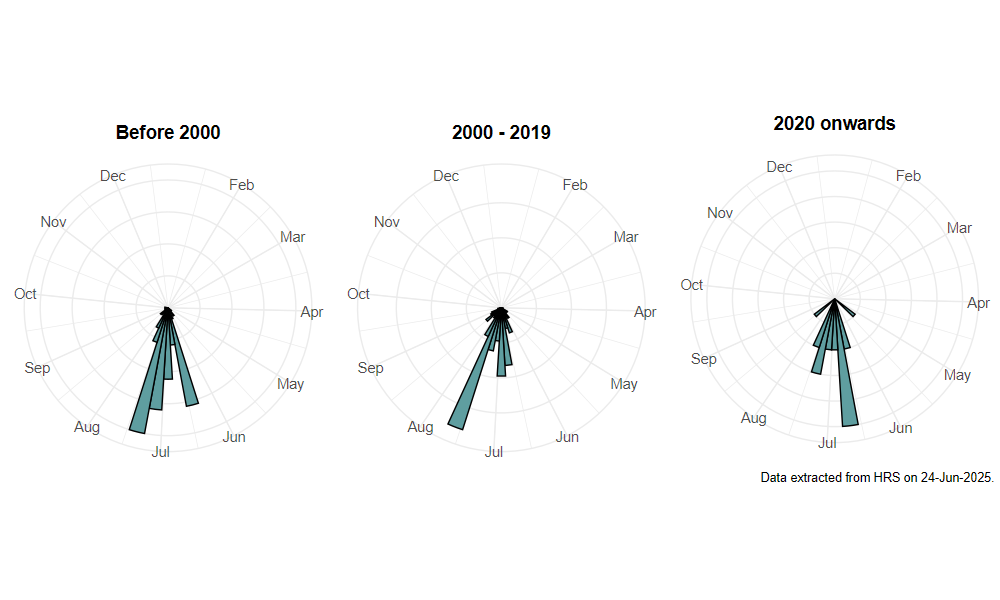Platycheirus nielseni Vockeroth, 1990
Identification
Identification difficulty = 3. ![]()
![]() according to Ball & Morris, 20241
according to Ball & Morris, 20241
Synonymy
Platycheirus species A in Stubbs & Falk (1983)2. This species was split from P. peltatus by Vockeroth (1990)3.
Biology
Larva unknown. Adults can be frequent in damp places such as wet, rushy meadows and along stream sides in upland areas, usually where there is some shelter from scrub or trees. Males can be found hovering in groups in clearings and over streams, in dappled sunshine.
Flight period
The following plots show the number of unique records per week excluding those reported to be of immature stages.

Distribution
This species appears to be widespread in the north and west, including Scotland, North Wales and northern England, with some records from fairly high altitude on moorland. In the south of England there are widespread records from Dorset and Somerset and one confirmed record from the Thames marshes.

Trends
The following plots show the Frescalo TFactor vs year and a map of the rescaled frequency (all records) for the species.
-
Ball, S., & Morris, R. (2024). Hoverflies of Britain and Ireland. WILDGuides (3rd ed.). Oxford: Princeton University Press. ↩
-
Stubbs, A., & Falk, S. (1983). British Hoverflies: An Illustrated Identification Guide (1st ed.). Reading: BENHS. ↩
-
Vockeroth, J. (1990). Revision of the Nearctic species of Platycheirus (Diptera, Syrphidae). Canadian Entomologist, 122, 659–766. ↩